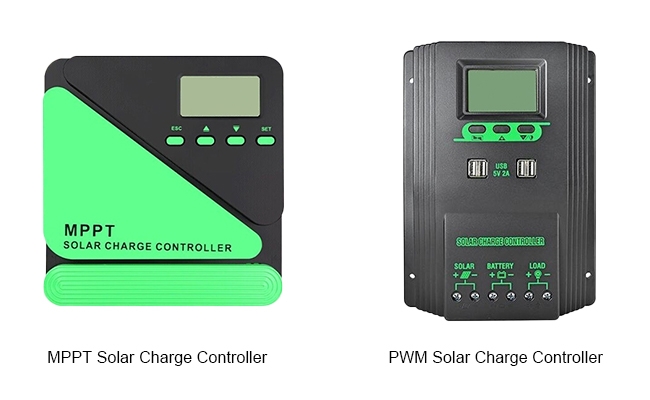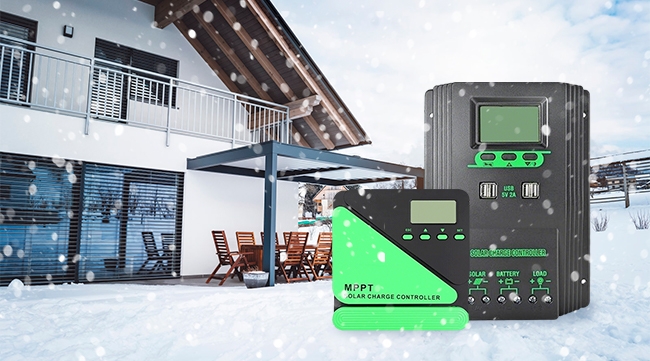As solar power continues to grow in popularity across the world, more people living in colder regions are curious about whether their systems can operate efficiently during winter. One of the most critical components of any solar setup is the solar charge controller, the device responsible for regulating voltage and current from solar panels to the battery. The question arises: Can solar charge controllers work in cold climates? The short answer is yes, but there are some important factors and precautions to understand. Let's take a closer look at how temperature affects performance, what types of controllers are most suitable, and how to keep your solar power system running efficiently even in freezing conditions.

Understanding How Solar Charge Controllers Work
Before diving into temperature performance, it helps to understand what a solar power charge controller actually does. It acts as a regulator between your solar panels and your battery bank, ensuring that batteries are charged safely and efficiently. Without a charge controller, batteries could overcharge during sunny hours or discharge back into the panels at night.
There are two main types of charge controllers:
- PWM (Pulse Width Modulation) Controllers. These are simpler and more affordable. They gradually reduce the amount of power sent to the battery as it nears full charge, maintaining a steady voltage. However, PWM controllers are less efficient in converting solar energy, especially in variable weather conditions.
- MPPT (Maximum Power Point Tracking) Controllers. These are more advanced and efficient. They adjust the input voltage and current from the solar panels to ensure the battery receives the maximum possible charge, even when sunlight intensity or temperature changes. MPPT controllers are generally better suited for cold and variable climates.
How Cold Affects Different Types of Controllers?
Cold weather can have a noticeable impact on solar system charge controllers, though the effects vary depending on their type: PWM (Pulse Width Modulation) or MPPT (Maximum Power Point Tracking). In general, low temperatures affect both the efficiency of power conversion and the longevity of internal electronic components. When the temperature drops, the controller's internal circuitry can experience slower response times, and certain materials, such as capacitors and transistors, may stiffen or contract, increasing resistance and reducing performance. Moreover, LCD screens on some models can become sluggish or even freeze in subzero conditions, making it harder to read settings or monitor system data. However, cold temperatures also have a potential upside: solar panels become more efficient in producing voltage, which can slightly improve charging performance, provided the controller can handle it properly.
For PWM solar charge controllers, cold weather presents both operational and efficiency challenges. These controllers are simpler and less adaptive than MPPT types, meaning they cannot dynamically adjust to voltage changes from the panels. In extremely cold conditions, when solar panel voltage rises, PWM controllers often waste excess voltage rather than converting it into usable power. As a result, energy efficiency drops significantly, and batteries may not charge optimally. Additionally, moisture from frost or condensation can pose a risk to lower-quality PWM controllers, as water ingress might cause short circuits or corrosion on the circuit board. To prevent this, PWM controllers should be housed in dry, insulated enclosures when installed in cold climates, and cables should be checked regularly for ice buildup or cracks caused by temperature fluctuations.
MPPT controllers generally perform better in cold environments due to their advanced voltage tracking capabilities. In fact, low temperatures can improve their charging performance because MPPT units can take advantage of the higher voltage output from cold solar panels, converting it efficiently into usable current for the battery. However, their complex electronics and microprocessors are also more sensitive to extreme cold. Without proper insulation or heating elements, internal components may operate outside their ideal temperature range, leading to slower tracking speed or even temporary malfunction. To ensure reliability, MPPT charge controllers designed for cold climates should feature temperature-compensated charging, internal thermal protection, and durable housings rated for subzero use. Overall, while cold can temporarily challenge the performance of both PWM and MPPT controllers, modern designs and proper installation practices, such as keeping controllers in weatherproof enclosures and maintaining good ventilation, can ensure stable operation and long service life even in freezing conditions.

How to Protect Your Solar Charge Controller in Cold Weather?
- Keep it Warm and Dry. Low temperatures can cause condensation and frost inside the controller, potentially damaging electronic components. Install your charge controller in an insulated, weatherproof enclosure—preferably indoors or inside a temperature-controlled cabinet. Avoid placing it directly on metal or concrete walls, as these surfaces transfer cold easily.
- Protect Against Moisture and Corrosion. Winter humidity, snow, and ice can lead to corrosion or short circuits. Ensure all terminals, fuses, and connectors are tightly sealed. Use corrosion-resistant wiring and apply dielectric grease to metal contacts for extra protection. The recommended temperature range for use is between -10 ℃ to 55 ℃.
- Regularly Inspect and Clean Components. Snow buildup on panels reduces energy input, which can stress the controller. Clean panels regularly and check the controller display for any warning signs such as low input voltage or temperature errors.
Conclusion
So, can solar charge controllers work in cold climates? Absolutely. In fact, with proper design, installation, and equipment choice, solar systems can perform remarkably well even in freezing temperatures. The key is selecting the right charge controller, installing it in a protected location, and ensuring your batteries are temperature-managed. Cold air may reduce sunlight hours, but it also increases panel efficiency—an advantage that can balance out the winter limitations. As solar technology continues to evolve, the barriers to renewable energy in cold regions are shrinking. Your solar power charge controller can keep powering your home reliably. If you have any other questions, you can contact us and Inverter Online Store will do our best to assist you.
